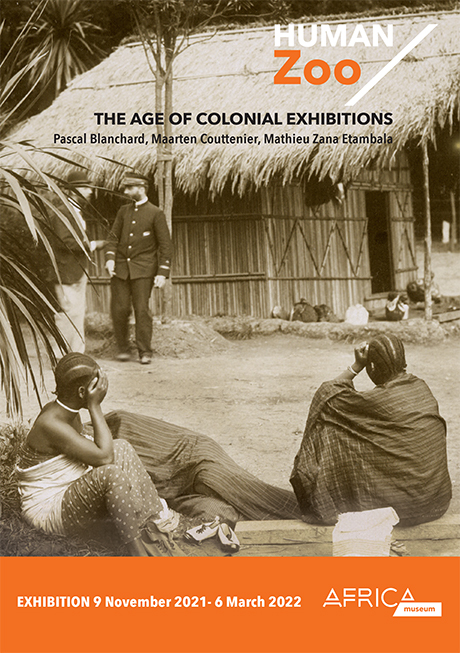
Human zoo. The age of colonial exhibitions
This catalogue accompanies the exhibit Human zoo. The age of colonial exhibitions. After stops in Paris (Musée du quai Branly), Rouen (Muséum), Liège (Cité Miroir), and Point-à-Pitre (Mémorial ACTe), this travelling exhibition is presented at the Royal Museum for Central Africa in partnership with the Groupe de recherche Achac to mark 125 years since a colonial section was set up in Tervuren as part of the 1897 International Exhibition of Brussels.
Designed by historian Pascal Blanchard (Groupe de recherche Achac) and Maarten Couttenier and Mathieu Zana Etambala (RMCA), the exhibit takes the visitor back to the forgotten history of ‘human zoos’. While it puts the spotlight on Tervuren, the exhibit places the phenomenon of ‘ethnographic’ displays in a broader context. From the early 19th century up to the Second World War, such ‘exhibitions’ were organized all across Europe as well as in the United States, Japan, and even Congo itself (in 1931), growing in popularity as new colonial conquests were made. They staged not only Africans but inhabitants of all colonized territories: American Indians, Aboriginals, Indians, Asians, Maghrebis, Orientals, Fuegians… Yet it was after 1880 that such exhibitions truly flourished in Europe. From a few individuals put on display at the start, the attractions rapidly took the form of ‘human zoos’ featuring exotic decorations or ‘real villages’ on show for millions of visitors.
With the help of over 500 documents, the exhibit takes a historical and thematic approach to examining the line between ‘exotics’ and the colonized, science and voyeurism, colonialism and racism, and hopes to lift the anonymity of the persons exhibited (particularly the Congolese present in the park of Tervuren in 1897 and in other exhibitions in Belgium between 1880 and 1958).
On sale at the AfricaShop and via the RMCA Publications service.
Booklet softcover, 68 pages, 15 X 21 cm – ISBN: 978-9-4926-6989-6 – Retail price incl. taxes: 7 euros